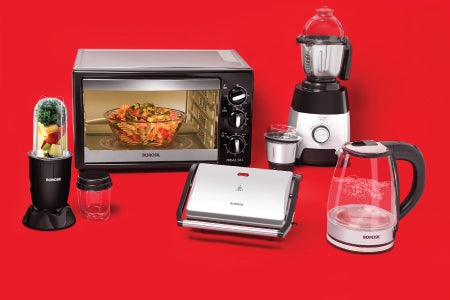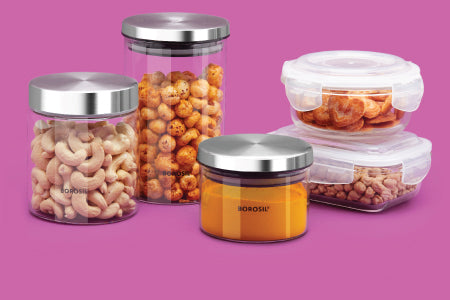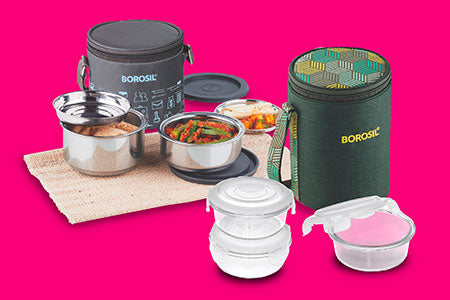
Homemade Kaju Katli Recipe
Kaju Katli: Your Guide to Homemade Delicacy
In Indian sweets, Kaju Katli, also recognised as Kaju Barfi, is a highly esteemed delicacy. What's truly astonishing is the way it combines basic ingredients to produce an incredibly delicious treat. The highlight of the Kaju Katli recipe is its luxurious, velvety texture that gracefully dissolves on your tongue. This sweet can be prepared with just four ingredients, and this guide will help you understand the preparation process.
The Tale of Kaju Katli
Kaju Katli is a traditional North Indian sweet with simplicity yet elegance. Its primary ingredients include cashew nuts, sugar, and a hint of cardamom for an exotic flavour. "Kaju" means cashews, while "katli" means thin slices. What makes Kaju Katli so beloved is its luxurious and melting-in-mouth texture.
Kaju Katli has become one of the most cherished Indian sweets available year-round. Its mild yet exquisite flavours, combined with the creamy texture that defines it, make it an irresistible treat. Every bite of this delectable treat transports people to a world of cashew bliss, delighting their taste buds with every bite.
Kaju Katli is the best gift for any special celebration, whether a festival or a personal achievement. Be it any Indian festival, Diwali, Holi, or Navratri, Kaju Katli is an all-time favourite when it comes to gifting sweets. While it's easy to purchase a box from your local Indian store, crafting this sweet delicacy at home has merits. Homemade Kaju Katli is free from preservatives, and using organic ingredients can even be healthier.
Kaju Katli: Ingredients You'll Need
- 200 grams of Cashews
- ½ cup of Sugar
- 6 tablespoons of Water
- 2 teaspoons of Ghee
- 1 teaspoon of Rose Water or Cardamom Powder
Crafting Kaju Katli: Step-by-Step Guide
Step 1: Cashew Crusade
- Begin by taking cashews and placing them in a blender. To ensure freshness and flavour, use premium-quality cashews that are unsalted and unroasted. Taste them before proceeding. You can use either whole or split cashews, but splitting them is a good practice to inspect their quality.
- To make the cashew powder, pulse the cashews in short bursts to avoid oil release and prevent lump formation. Ensure not to overheat the cashew powder, which can alter the flavour.
- After grinding, sieve the cashew powder to ensure it's light, lump-free, and uniform in texture. This step also helps remove any coarse chunks of cashews.
Step 2: Prepare the Glazing Sugar Syrup
- Now, prepare sugar syrup. Add half a cup of sugar and 6 tablespoons of water. Let the sugar dissolve gently on medium heat and turn it up to rapid boiling.
Step 3: Cooking Mastery
- Put cashew powder in two lots, reduce heat to low and stir well without any lumps. Cook at low to medium heat till the mixture thickens.
- Include 2 teaspoons of ghee and one teaspoon of rose water or cardamom powder. Keep stirring and cooking. The mixture should start pulling away from the sides of the pan.
- To determine the readiness of the mixture, perform the "dry ball" test. Take a small amount of the mixture, cool it slightly and roll it into a small ball in your hands without sticking until relatively dry but still soft. If not, cook for another 5 minutes and try again.
Step 4: Spread the Mixture
- Once the combination is of the perfect consistency, swiftly shift it to a greased plate or parchment paper. After it cools slightly, knead it until it becomes smooth.
- Roll the mixture into an oval shape with even pressure.
- Allow it to cool completely before cutting it into squares or diamonds. If desired, you can place edible silver foil on top for an extra touch of elegance.
Expert Tips for the Perfect Kaju Katli
Nailing Cashew Powder
- The quality of the cashews you choose is paramount. Opt for premium, unsalted, and unroasted cashews. Avoid cashews that appear stale, rancid, or discoloured.
- While whole cashews work, splitting them is a good practice. It allows you to inspect the cashews for quality and any unwanted impurities.
- The temperature and texture of the cashews are crucial. They should be crunchy, not soft. Soft cashews won't grind well; if ground too much, they can release unwanted oils. Be sure to use cashews at room temperature. If you've stored them in the fridge, give them a brief, gentle roast to warm them up. The goal is to use moisture-free cashews.
- The smoothness of your Kaju Katli will be determined by how finely you ground the cashews. The finer it is, the smoother the final product will be. Pulse the cashews in short intervals of about 20 to 35 seconds to prevent oil release and maintain the right texture. Sieving the cashew powder is essential to remove lumps and ensure uniformity in texture.
Perfecting the Sugar Syrup
- To make the sugar syrup, boil the required quantity of sugar in water rapidly. The consistency of the sugar syrup does not matter while making Kaju Katli, as it doesn't need to be of specific consistency.
- The goal is that when the syrup comes to a rolling boil, it will be close to a one-string consistency.
- Avoid overcooking the mixture, which can lead to dry Kaju Katli. Before being transferred to the set, the cooked mixture should pass the "dry ball" test. If the mixture is undercooked, it will become sticky.
- Kneading the mixture when it's slightly hot (but not too hot) is the key to achieving the smooth and melt-in-the-mouth texture that defines Kaju Katli.
Conclusion
Kaju Katli pleases your tastebuds and is perfect for sharing with others or as a gift for special occasions. Each piece of this delicious, flavorful dessert can last for several days. You can store these delicious squares in a sealed container without putting them in the fridge, and they don't go bad early. So, whether you share with people who want to try this, you can offer a few squares to whoever you want. Or maybe you choose to keep it to yourself to eat day by day.
Frequently Asked Questions
This recipe uses plain cashews, which are neither salted nor roasted.
Yes, you can try it and work your way through.
Place the dough again in the pan, use some splash of water and try to cook it for a few more minutes.





















